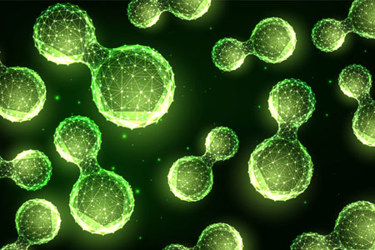Optimizing Water Treatment For Green Hydrogen Production
By Nick Nicholas

As the world intensifies its focus on green hydrogen production, a critical factor that often goes unnoticed is water treatment. The process of producing hydrogen through electrolysis involves complex chemical reactions and precise atomic calculations, making water treatment an essential part of the equation.
In this article, we will discuss how understanding the atomic composition of water can lead to accurate calculation in green hydrogen production. We will explore how overcoming covalent bonds between atoms through electrolysis plays a significant role in this process and discuss why the final deionization step is so important.
We will also examine how renewable power plants are enhancing the energy-water nexus by utilizing different water sources for green hydrogen production.
The Role Of Water Treatment In Green Hydrogen Production
Producing green hydrogen requires ultrapure water, this water can be sourced from groundwater, treated wastewater, or seawater. However, getting this water pure enough for electrolysis is no easy task. Companies like Genesis Water Technologies have the knowledge and water treatment solutions to assist renewable power generation companies to optimize green hydrogen production through electrolysis.
Understanding the Atomic Composition of Water for Accurate Calculation
To grasp how water’s atomic composition affects green hydrogen production, we need to know its molecular structure. Each molecule has two hydrogen atoms bonded covalently with one oxygen atom.
Overcoming Covalent Bonds Between Atoms Through Electrolysis
Electrolysis, a crucial part of the process, uses electricity to break these bonds and separate the atoms.
Importance of Final Deionization Step
The last step in preparing ultrapure water is deionization — removing any remaining ions. Without this polishing stage, even trace amounts of impurities could degrade the efficiency and sustainability goals of green energy-generation companies.
Overall, the water requirements for green hydrogen is stoichiometrically calculated at 9 L (2.37 gal) of water per kg (2.2 lb) of green hydrogen produced.
Enhancing Energy-Water Nexus With Renewable Power Plants
In the battle against climate change, renewable power plants are getting creative by using different water sources for green hydrogen production.
Large-Scale Green Hydrogen Production Initiatives
Countries like the U.S. and India are making strides in adopting large-scale green hydrogen initiatives. In India, these efforts could revolutionize their existing grey hydrogen consumption patterns, which currently stand at 6 million tons annually. The shift towards green energy does not seem just a trend but it is being adopted worldwide for the sustainability of the planet.
India’s plan to reduce its dependence on fossil fuels and transition to renewable energy sources is gaining momentum. This approach will address climate change challenges while ensuring long-term economic stability.
In the U.S., the Biden administration is offering companies up to $100 billion in tax credits and regions up to $7 billion in grants to build out hydrogen hubs to help reach a target of producing 50 million metric tons of clean hydrogen fuel by 2050.
In addition, international efforts to use seawater or dirty waters show promising prospects too. Key locations housing renewable power generation centers might become focal points for advanced research activities focused on developing cutting-edge technology platforms to further optimize hydrogen extraction through advanced electrolysis technologies.
The journey towards a greener future may seem challenging, but with continuous technological advancements and commitment from governments worldwide, it is certainly achievable.
FAQs In Relation To Water Treatment For Green Hydrogen Production
What is the water quality for green hydrogen production?
The water quality required for green hydrogen production should be high, typically demineralized or deionized to prevent impurities that could hinder electrolysis.
How is water treated for hydrogen?
Water treatment for hydrogen involves processes like filtration, softening, reverse osmosis, and final deionization to ensure purity before electrolysis.
Which method is best for green hydrogen production?
The most efficient method currently used in green hydrogen production is proton exchange membrane (PEM) electrolysis due to its high efficiency and operational flexibility.
Does hydrogen production require clean water?
Hydrogen production, especially through electrolysis, requires clean or purified water to avoid contamination that can degrade the performance of electrolyzers.
Conclusion
Water treatment is critical to green hydrogen production. Many electrolyzers on the market currently require high volumes of high-quality water to produce green hydrogen, typically requiring around 9 liters (2.36 gal) of water for every kg (2.2 lb) of hydrogen. Electrolyzer manufacturers’ water quality requirements include conductivity less than 5 microSiemens per cm (mS/cm) to prevent damage and ensure longer lifespan of the electrolysis electrodes over long-term use — requirements made available through qualified water treatment solution providers.
Nick Nicholas is the Technical Director for Genesis Water Technologies, Inc, a global leader in integrated solutions for drinking water and wastewater treatment. In this role and previous roles with GWT, he has coordinated and led a global team of technical professionals in designing, engineering, and building treatment system solutions for industrial, commercial, and water utility clients worldwide. Mr. Nicholas holds the distinction of being named one of the top 10 water professionals under 40 by Water & Wastes Digest magazine in 2019.
